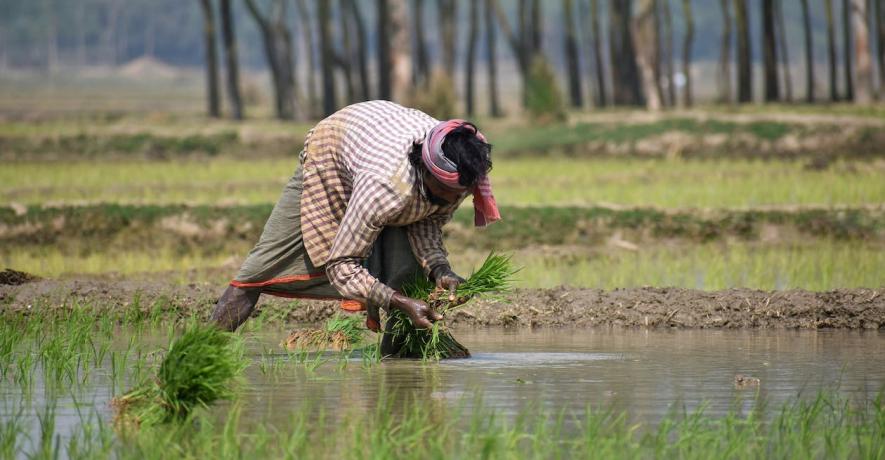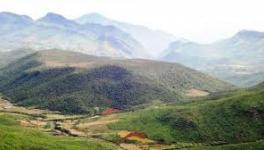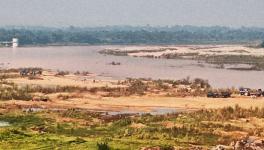Bihar: Paddy Farmers Face Climate Change Brunt, Transplantation Takes a Major hit

Representational Image. Image Courtesy: Pexels
Patna: Thousands of paddy farmers, mostly small and marginal, are experiencing the impact of climate change in Bihar as the monsoon rainfall pattern has changed and is likely to be more erratic in the coming years. This not good news for the already distressed farmers. Agriculture as well as climate change scientists have, therefore, advocated crop diversification to adapt to sustainable agriculture.
What is ironic is that amid flood-like situation in parts of north Bihar, farmers across the state are worried due to lack of adequate rainfall, which has badly affected paddy transplantation so far, which is usually done in mid-July.
According to state disaster management department officials, floods are threatening a few districts in the Koshi and Seemanchal regions as the water level in rivers Koshi, Bagmati, Mahananda and Parman is rising following heavy rains for the past three days in the state and the catchment area of major rivers in neighbouring Nepal.
An official at India Meteorological Department Centre, Patna, told NewsClick that as per official data, the state recorded 237.2 mm of rainfall from June 1 to July 17, which was nearly 34% less than the normal 361.6 mm rainfall.
With IMD predicted poor rainfall in the next five to six days due to the weak monsoon system, the rainfall deficit is set to rise, posing a huge challenge for farmers who are already struggling to save their paddy seedlings for transplantation, which has already been delayed.
Agricultural scientist S K Singh told NewsClick that farmers have no option but to wait for rains for paddy transplantation. He also cautioned farmers not to transplant more than 35 day-old seedlings.
As per the official rainfall data so far, in the past 78 days (June 1 to July 17), 35 districts of the toal 38 districts recieved less than normal rainfall, except Kushanganj, Buxar and Bhagalpur.
An official of the state agriculture department said that till July 18 nearly 23% of paddy seedling transplantation had been completed. The department has targeted 36 lakh hectares for paddy cultivation this year.
Abdus Sattar, a senior scientist at the Centre for Advanced Studies on Climate Change, Rajendra Prasad Central Agricultural University, Pusa in Samastipur district, told NewsClick that the rainfall pattern had significantly changed in the state due to the changing climate.
"About 60-70% kharif crops, mainly rice and maize, are grown under rainfed conditions, and in view of the deficit rainfall in July, paddy transplantation has been seriously impacted, forcing farmers to think of alternative ways, such as crop diversification and other technological options," he added.
Sattar also agreed that a long dry spell during monsoon was bad for the paddy crop. “Even if the monsoon becomes active by the end of this month, paddy transplantation time will be over by then, as the optimum transplanting window of rice is between June 20 to July 15. Farmers who will go for paddy transplantation by the end of July or early August, will see lower yields,” he added.
He said as the climate would become erratic, hence farmers would accordingly have to change the cropping pattern.
In major parts of the state, farmers are a hapless lot. Take, for instance, Sukhdeo Yadav and Lakhshaman Prasad both marginal farmers in Tekari block in Gaya district, who are worried as they depend on monsoon rain for paddy cultivation. "We have not transplanted paddy till date due to lack of water and rainfall deficit", Yadav told NewsClick.
Prasad said, “We are expecting rains and hope that like last year, heavy rainfall will end the water crisis. But in case of no rains on time, fears of a drought-like situation may haunt us next month”.
Yadav and Prasad are among thousands of farmers facing the brunt of extreme weather due to climate change.
In Bihar, farmers usually go for paddy sowing during Adra Nakshatra after Rohini Nakshatra which starts after June 20. Agricultural scientists here say that June-end to July 10 -15 is the best time for paddy transplantation.
Get the latest reports & analysis with people's perspective on Protests, movements & deep analytical videos, discussions of the current affairs in your Telegram app. Subscribe to NewsClick's Telegram channel & get Real-Time updates on stories, as they get published on our website.























